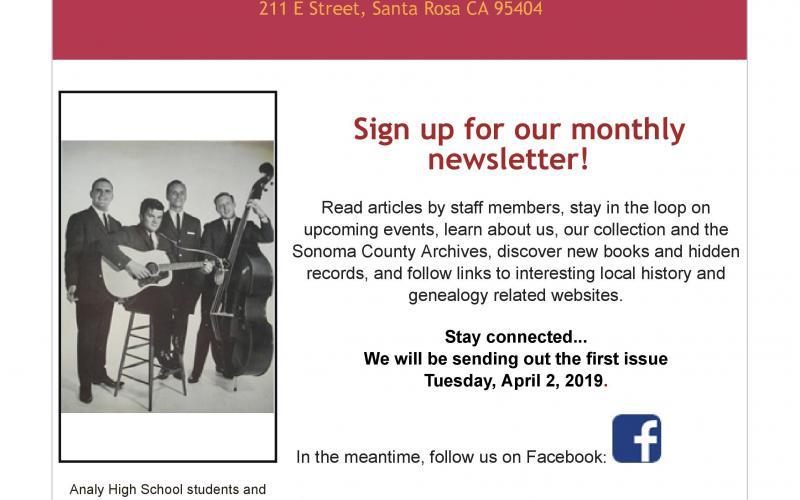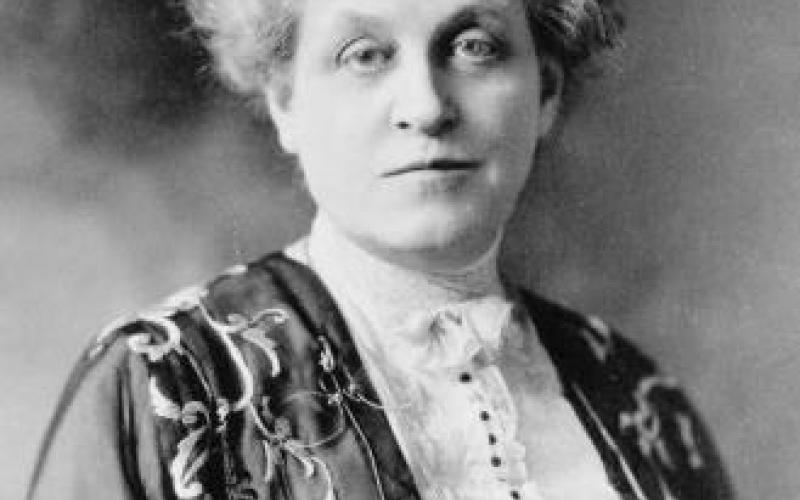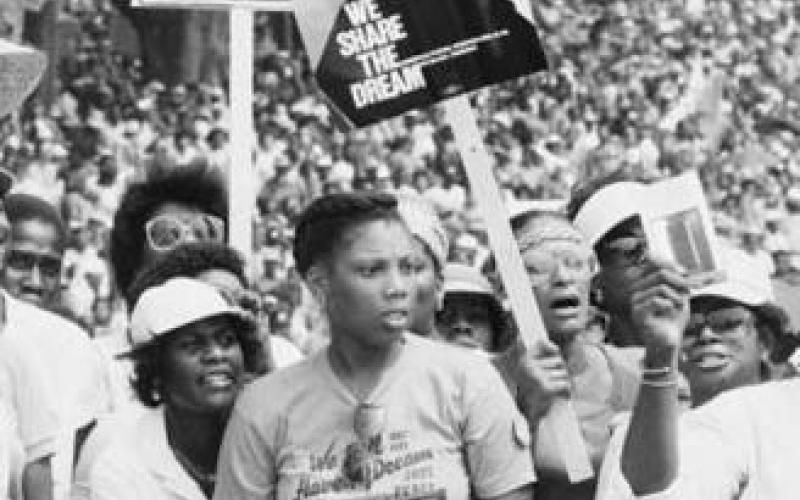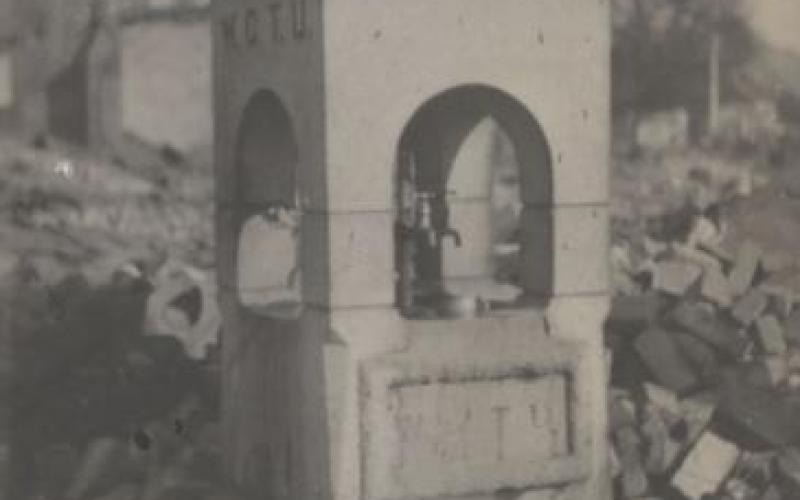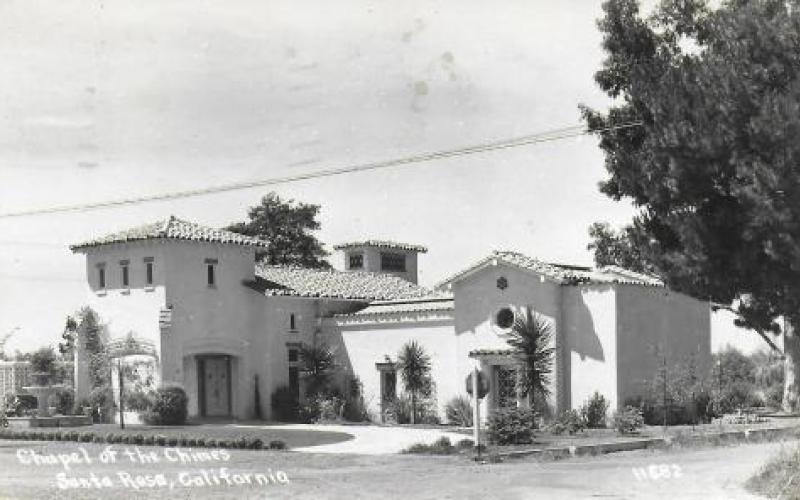Local History and Genealogy Notes
SIGN UP FOR OUR NEWSLETTER
Posted on February 28, 2019
The Sonoma County History & Genealogy Library is pleased to announce the launch of its new newsletter!
Read articles by staff members, stay in the loop on upcoming events, learn about us, our collection and the Sonoma County Archives, discover new books and hidden records, and follow links to interesting local history and genealogy related websites. Stay connected... We will be sending out the first issue Tuesday, April 2, 2019.
Subscribe by clicking this link (check the box for “History & Genealogy”) SIGN UP
NOW IS THE TIME TO PLAN FOR THE 100th ANNIVERSARY OF WOMEN'S SUFFRAGE
Posted on January 30, 2019
The year 2020 marks the 100th Anniversary of the passage of the 19th Amendment, guaranteeing and protecting women's constitutional right to vote. This historic centennial offers an unparalleled opportunity to commemorate a milestone in democracy and to explore its relevance to the issues of equal rights today.
At the Sonoma County History & Genealogy Library, in partnership with National Women's History Alliance, we're working with a team of volunteers to document those involved in the local suffrage movement as well as the sites where suffrage-related activities occurred. This research will feed into two related projects - a Votes for Women Trail Map and written biographical sketches that will be submitted to a national online biographical database managed by the Center for the Historical Study of Women and Gender at Binghamton University in New York.
Volunteers and library staff are making exciting discoveries on a weekly basis. For example, we just learned that Carrie Chapman Catt (1859-1947), Iowa educator, two-time president of the National American Woman Suffrage Association (NAWSA) and founder of the League of Women Voters spoke to a large audience at the Petaluma Opera House on October 29, 1896. Mrs. Catt had been invited to speak by the Petaluma Political Equality Club and was introduced by club president, Ellen H. Button. Mrs. Button, a native of Vermont, came to Petaluma with her husband Isaac V. Button in 1861 at the age of 22. In 1870, she was the treasurer of the Sonoma County Woman Suffrage Association, when she signed her name to a petition for women's suffrage that was sent to the California legislature. Mrs. Ellen H. Button was one of 398 Petaluma residents to sign the petition.
Many of those listed on that 1870 petition, including Ellen H. Button, continued to work on behalf of the suffrage cause for years. Thanks to the fact that a number of local newspapers are available digitally, determining the level of their involvement is much easier than it would have been in the past. Newspapers research is so important because these individuals are not often found in secondary sources and if they are their work on behalf of suffrage is often overlooked.
To learn more about our research and find out how you can get involved, please contact the Sonoma County History & Genealogy Library
Sonoma County Library Closed on January 21, 2019
Posted on January 15, 2019
A friendly reminder that all Sonoma County Library branches will be closed this Monday, January 21, 2019, in observance of Martin Luther King, Jr. Day. This photograph, credited to Chester Higgins, shows people participating in the 20th Anniversary March on Washington, in honor of Martin Luther King, Jr., and to support the creation of MLK Day; August 27th, 1983. This image is just one of millions of rights-cleared images available free of charge through Britannica ImageQuest, which is available to all Sonoma County Library card holders.
Santa Rosa's WCTU Fountain
Posted on January 06, 2019
Recently I was asked if I knew anything about Santa Rosa's Women's Christian Temperance Union. My response was not a lot, but that I'd see what I could find out. We're lucky to have a copy of Petaluma's WCTU chapter minutes from 1911 to 1921 at the Sonoma County History and Genealogy Library, but no such records for the Santa Rosa Chapter exist within our collection.
By using various newspaper databases I was able to locate quite a bit of information about Santa Rosa's WCTU including the fact that they commissioned Kinslow Brothers to construct a granite fountain at the corner of Fourth and B Streets. The dedication took place on August 24, 1901, at which time the fountain was, according to a Press Democrat article, "received into the keeping of the City of Roses by its chief executive, Mayor James S. Sweet, who made a brief and very appropriate speech of acceptance."
The California Historical Society has a photo of the fountain taken after the 1906 earthquake. Note the caption presumably supplied by the photographer, James O. Rue: "The only thing on Fourth St. that remains intact."
The question now is where did the fountain go. Inquiring minds would like to know.
Santa Rosa's Chapel of the Chimes
Posted on November 18, 2018
People often think that because Julia Morgan did a redesign of Oakland's Chapel of the Chimes in 1928, that she also designed Santa Rosa's Chapel of the Chimes. Not the case; although, there is a connection to the famous architect.
The Chapel of the Chimes located at 2601 Santa Rosa Avenue was designed by Lazer Nusbaum, a former associate of Julia Morgan, in 1937 and dedicated in 1938. In 1941, Nusbaum was hired again to design a mausoleum. I came to learn this by a chance discovery while looking through an unprocessed stack of architectural drawings at the Sonoma County Archives. The Archives are managed by myself and other staff at the Sonoma County Library.
The Sonoma County Archives are housed in a 3,800 square foot building that was once part of the Los Guilicos School for Girls located off of Pythian Road, about nine miles east of downtown Santa Rosa. Within the Archive is a large collection of materials known as the Henry N. Wallace Collection.
Henry N. Wallace (1916-1974) was a Sonoma County-based civil engineer and surveyor. During the 1930s Wallace served as the director of two different New Deal Era programs: State Emergency Relief Administration (SERA) and the Civil Works Administration (CWA). Later he was employed by the County of Sonoma’s Surveyor-Road Commissioner’s Department. In 1955, Wallace founded his own consulting firm of Henry N. Wallace and Associates in Santa Rosa.
Following Wallace’s death in 1974, his collection of field books, property surveys, engineering records, architectural drawings, building and bridge specifications and hundreds of other documents were deeded to the Sonoma State University Special Collections Library by Wallace's former associates. Sonoma State, in turn, gave the collection to the Sonoma County Library in the 1990s. The collection consists of materials related to Wallace’s career as a private consultant as well as items that date back to the 1900s which belonged to his uncle, Marshall M. Wallace, a former County of Sonoma Road Commissioner, a sanitation engineer, and surveyor.
As a surveyor for the County of Sonoma, Marshall Wallace reviewed a lot of plans including those associated with the Chapel of the Chimes. Those records apparently were transferred to his nephew at some point.
Although I have yet to find the 1937 drawings for the chapel, it was the plans and specifications for the 1941 mausoleum that provided the clue I needed for further research.
A Press Democrat article dated April 23, 1937, which was easily found using Newspapers.com which is accessible through the Sonoma County Library, describes how a Spanish type community chapel and crematory was to be designed by L. L. Nusbaum, "widely known architect until recently associated with Julia Jordan (sic)" on a five-acre tract on the Redwood Highway near Hearn School.
Using a variety of resources such as Ancestry.com, I learned that Lazer Nusbaum was born on November 18, 1896, in Duluth, Minnesota. His father was from Russia and his mother from Austria. At the time of their immigration to the United States, Nusbaum's parents were living in Russia.
After graduating from City High in Duluth, Nusbaum worked as a draftsman for a well known local architect named Anthony Puck and later attended the Carnegie Institute of Technology in Pittsburg, Pennsylvania. By 1924, Nusbaum was calling himself an architect when he applied for a passport; was living in San Francisco and working in the Merchants Exchange Building - the same building in which Julia Morgan had her offices between 1904 and 1950.
Other documents found within the Henry N.Wallace Collection related to the Chapel of the Chimes include building specifications and plans for an addition to the Garden Mausoleum prepared by architect Aaron Green, an associate of Frank Lloyd Wright, dated July 22, 1952; building specifications and plans for a mausoleum addition, prepared by architect, John D. Wagenet, a former draftsman for Julia Morgan, dated March 4, 1955.
Santa Rosans may not be able to claim a Julia Morgan design when it comes to the Chapel of the Chimes, but her association with those who did is notable as is the connection to Aaron Green.
Other treasures related to Santa Rosa's and Sonoma County's architectural history will soon be revealed as efforts to fully inventory the Henry N. Wallace Collection are underway thanks to funding from the Sonoma County Historical Records Commission, the Sonoma County Historical Society and the Sonoma County Landmarks Commission. Stay tuned!
In the meantime, stay connected with the Sonoma County & History and Genealogy Library by liking our facebook page.
Note: This article was first published in the Historical Society of Santa Rosa's Fall 2018 newsletter. To learn more about the good work that this organization is doing check out their website.

